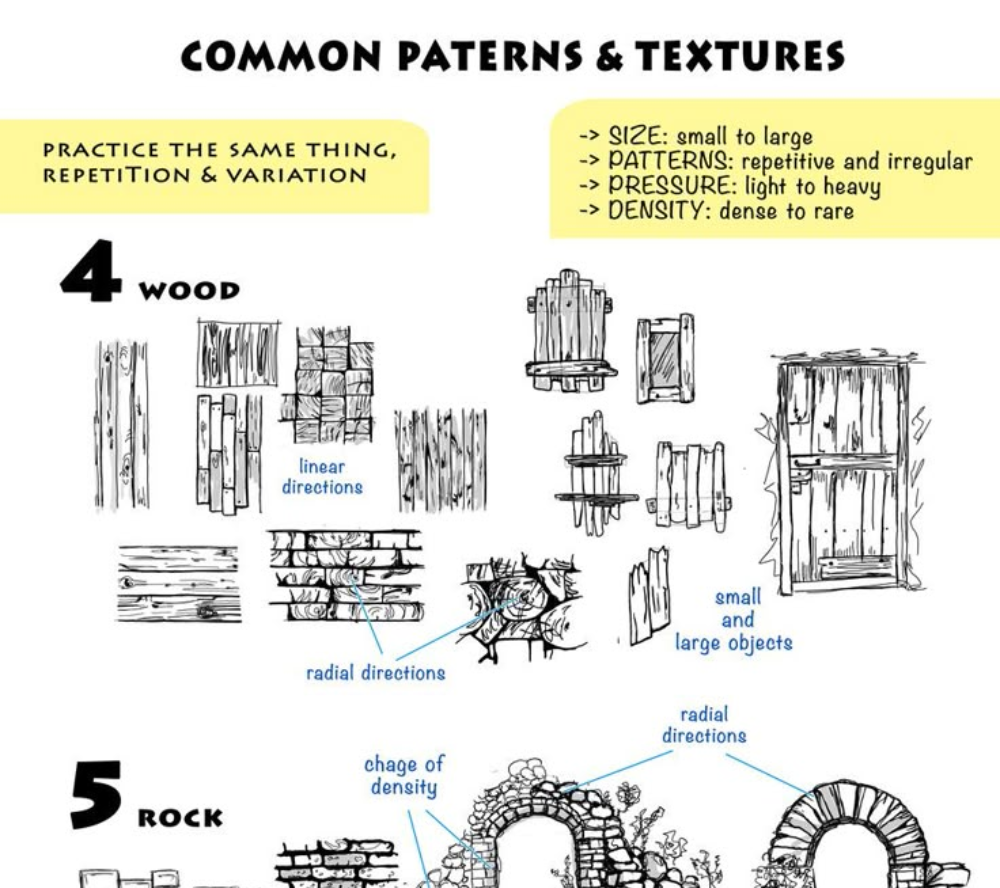Artistic Techniques for Texture and Pattern

This image appears to be a study sheet or reference guide for artistic techniques, focusing on common patterns and textures found in natural and man-made materials like wood, rock, and metal. Here’s a breakdown of the key points:
Core Principles
-
Repetition & Variation: Practicing the same elements with slight changes to create visual interest.
-
Scale & Density: Ranging from small to large objects, dense to sparse arrangements.
-
Pressure & Form: Using light/heavy marks and combining regular (e.g., geometric) with irregular (e.g., organic) shapes.
Material-Specific Techniques
-
Wood (Linear Directions)
-
Focus on straight, parallel lines (e.g., grain).
-
Vary pressure for light/dark contrast.
-
-
Rock (Radial Directions)
-
Patterns emanate from a central point (e.g., cracks, layers).
-
Mix sharp and rounded forms for texture.
-
-
Metal (Regular Forms & Symmetry)
-
Repetition of geometric shapes (squares, circles).
-
Combine with stone textures for contrast.
-
Note the deliberate redundancy (e.g., “square forms” listed twice) for emphasis.
-
Practical Tips
-
Experiment with size gradients (small → large).
-
Alternate between regular (predictable) and irregular (chaotic) patterns.
-
Adjust density (tight vs. loose spacing) and pressure (bold vs. subtle marks).
This sheet is likely used for drawing or design practice, encouraging artists to explore textures through structured exercises. The mix of technical terms and brief notes suggests it’s a personal or classroom reference.
